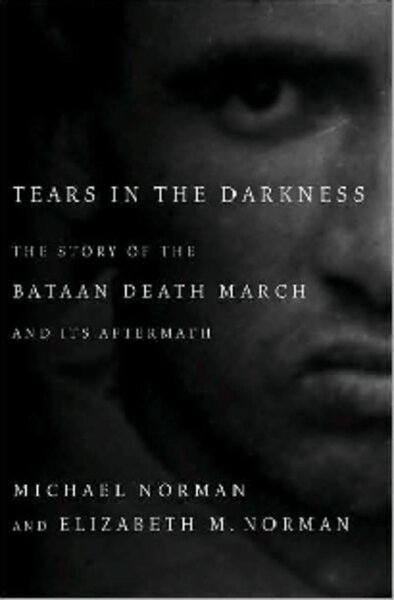Tears in the Darkness
Loading...
Hours after the Japanese bombed Pearl Harbor on Dec. 7, 1941, they attacked the Philippine Islands. The American and Filipino defenders were not well trained or equipped, and they were quickly pushed into the mountainous Bataan peninsula.
They fought bravely and tenaciously, but on April 9, 1942, outnumbered, low on ammunition, and worn down by hunger and disease, 76,000 troops surrendered. It was the largest army under American command ever to have been captured.
The prisoners were marched 66 miles under a blazing sun without adequate food, water, or medical assistance. They were subjected to brutal treatment by the Japanese guards. Those who could not keep up were simply killed – shot or decapitated – by death squads. Thousands – nobody knows how many for sure – died. The episode quickly became known as the Bataan Death March.
Those who survived were thrown into prisoner-of-war camps. The Japanese had little respect for soldiers who surrendered and, because Japan had not signed the Geneva Conventions on the fair treatment of prisoners of war, they did not worry much about those in their care. Food and clean water were scarce; toilets and beds were nonexistent; medical care was primitive; and discipline was swift, brutal, and capricious.
Eventually, those who remained alive were packed into overcrowded freighters called “hellships” and shipped to the Japanese mainland. Once again, food, water, medical care, and sanitation were inadequate and untold thousands died en route. In some cases, the prisoners were packed so tightly into dark cargo holds that they suffocated.
Finally, those who survived all this found themselves working 14-hour shifts in slave labor camps until the war ended.
Tears in the Darkness, written by Michael and Elizabeth M. Norman, is the definitive account of this exceptionally grim chapter of human history. Many books have examined World War II in the Philippines – the invasion, the death march, the prison camps, the hellships – but none of them pack the punch of or are as beautifully written as this compelling volume. This is “can’t-put-it-down” history.
The book is organized around the experiences of Ben Steele, a young cowboy from Montana who joined the Army Air Corps in 1940 at his mother’s suggestion. Assigned to Manila after basic training, he soon sent his mother a letter that concluded, “I have never felt better in my life and am having a swell time.... This will be one of the greatest experiences of my life.”
His assumption was misguided, but correct.
The American airplanes in the Philippines were destroyed on the ground before the Japanese invaded, so Steele was pressed into duty as an infantryman. He performed tasks – like killing and field dressing a water buffalo on a battlefield so that the troops would have something to eat – that he could never have imagined. In the most riveting part of the book, Steele and 300 other prisoners are assigned to build a road through a jungle in the most primitive conditions imaginable. After one-third of the workers died and the rest were hospitalized, the project was abandoned.
Steele survived captivity with a list of maladies that included jaundice, malaria, pneumonia, dysentery, malnutrition (which caused several teeth to fall out), beriberi, and a parasitic infection. He also suffered from “extreme nervousness” – what we would call post-traumatic stress syndrome.
He returned to Montana, studied studio art at the Cleveland Institute of Art, and became a popular professor at Eastern Montana State University. He tells the authors that upon waking every morning he has the same first thought: “I can go where I want to go, I can do what I want to do, it’s wonderful.”
The book seamlessly blends the history of the war with the stories of people like Steele who lived through it. It could just as easily and appropriately have been titled “Ben Steele’s Story.” Indeed, Steele’s experiences in captivity provided an endless source of artistic ideas throughout his life and his sketches illustrate the book.
The Normans’ graceful prose stimulates a wide range of emotions – horror, anger, sorrow, and amazement. They have little use for the pompous Gen. Douglas (“Dugout Doug”) McArthur who was more concerned with his own safety and reputation rather than the well-being of his men. On the other hand, they clearly admire the valor, leadership, and humanity of the two generals – Ned King and Jonathan Wainwright – who commanded the troops after McArthur was evacuated to Australia.
Their book is largely based on extensive research and some 400 interviews conducted over 10 years with American, Japanese, and Filipino soldiers. The presentation is thorough, balanced, and nuanced. The Normans convey the unspeakable horrors the prisoners faced in brutally clear, vivid fashion. But, at the same time, they treat Gen. Masaharu Homma – who commanded the Japanese troops on Bataan and who was executed as a war criminal after the war – fairly.
This is a superb book about the unspeakable tragedy of war and the triumph of the human spirit. It is also a wonderful reminder that of all the human characteristics we value and appreciate, courage in the face of great hardship occupies a special place.
Terry Hartle is senior vice president of government relations for the American Council on Education.






